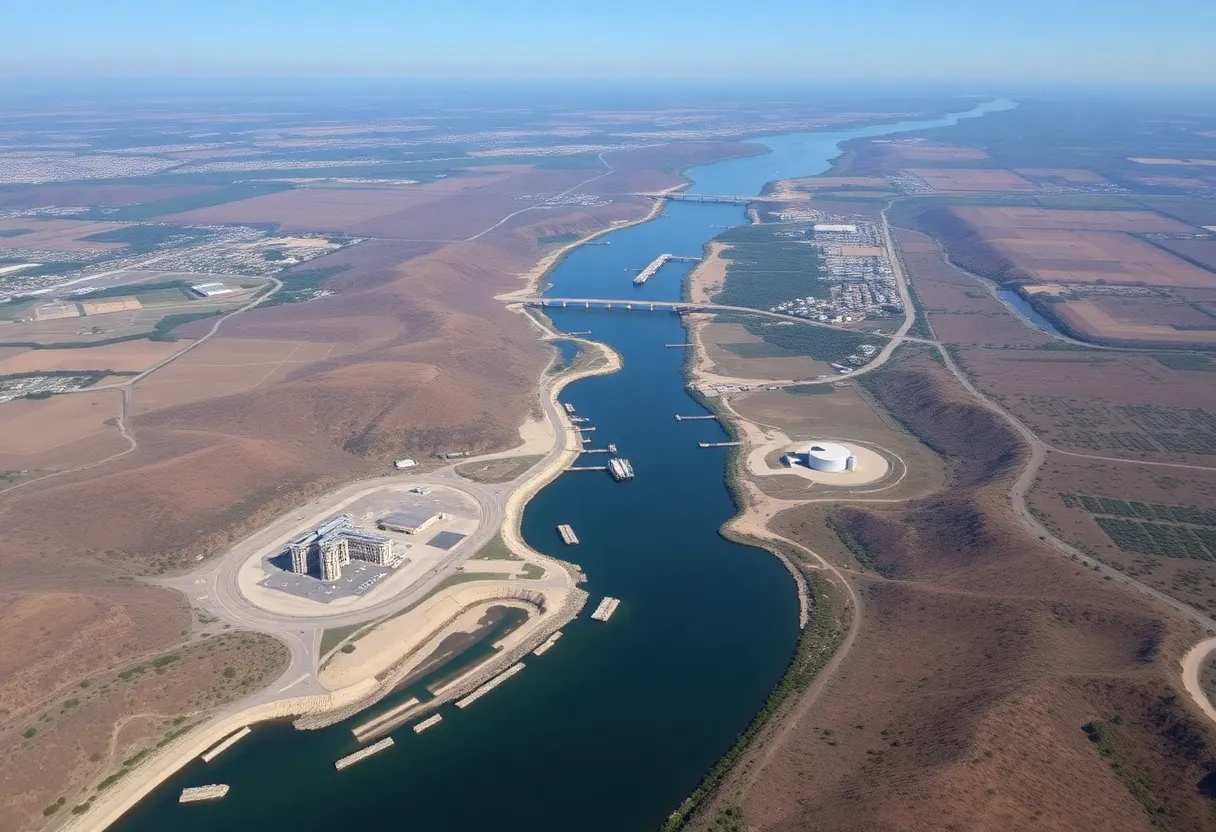News Summary
Repair work on a critical sewer line in Tijuana is set to temporarily increase sewage flow across the U.S.-Mexico border, potentially affecting local South County beaches. The project, overseen by the International Boundary and Water Commission, aims to improve wastewater management in the Tijuana region. The Air Pollution Control District is advising residents on managing odors and air quality during this one-week repair period, highlighting the need for effective cooperation on shared resource management.
San Diego, California – A temporary increase in sewage flow is expected across the U.S.-Mexico border in the Tijuana River Valley as repair work on a critical sewer line in Mexico is scheduled to begin this week. The project, which is in its second and final phase, is anticipated to last approximately one week and may lead to increased pollution at South County beaches, according to the county’s Air Pollution Control District (APCD).
The initiative will involve the diversion of untreated wastewater south of the border while the repairs are underway. The current sewer line is responsible for transporting untreated wastewater to both the South Bay International Wastewater Treatment Plant in the United States and the San Antonio de los Buenos Plant in Mexico. Ensuring the completion of these repairs is vital for averting catastrophic failures and improving the reliability of Tijuana’s wastewater management system.
The International Boundary and Water Commission (IBWC) is overseeing the construction progress and will provide updates as the project proceeds. The IBWC has been actively collaborating with Mexican authorities to address wastewater spills and has coordinated measures to direct as much wastewater as feasible to the South Bay facility during the repair period.
Several governmental bodies, including the U.S. Environmental Protection Agency, California’s Department of Public Health, and the San Diego Regional Water Quality Control Board, have been engaged in managing sewage treatment issues since the previous year. Their collective efforts aim to mitigate the environmental impact of operating sewage systems along the border.
As repairs take place, the APCD is tasked with monitoring complaints regarding odors and hydrogen sulfide levels in the communities neighboring the Tijuana River Valley. Residents experiencing issues with hydrogen sulfide odors are urged to limit outdoor activities and keep their doors and windows closed to avoid exposure.
To enhance indoor air quality while the repairs are conducted, the APCD recommends several strategies. These include the use of fans to circulate air, air purifiers equipped with HEPA filters, activated charcoal, and potassium permanganate to help manage smells. Individuals suffering from chronic respiratory conditions are advised to ensure their rescue medications are readily available and to seek medical attention if they face worsening symptoms potentially linked to the odors.
For residents who qualify based on specific criteria, the APCD is offering free air purifiers to assist in improving air quality during this period of heightened sewage flow.
This sewer line-repair project is a critical step in bolstering the infrastructure that manages wastewater in the Tijuana region, emphasizing the ongoing needs for cooperation and effective management of shared resources in the border area.
Deeper Dive: News & Info About This Topic
HERE Resources
Additional Resources
- CBS 8
- NBC San Diego
- Engineering News-Record
- Axios
- San Diego Union Tribune
- Wikipedia: Wastewater Management
- Google Search: Tijuana Sewage Issues
- Google Scholar: Sewage Pollution Tijuana
- Encyclopedia Britannica: Sewage
- Google News: Tijuana Sewage

Author: STAFF HERE SAN DIEGO WRITER
The SAN DIEGO STAFF WRITER represents the experienced team at HERESanDiego.com, your go-to source for actionable local news and information in San Diego, San Diego County, and beyond. Specializing in "news you can use," we cover essential topics like product reviews for personal and business needs, local business directories, politics, real estate trends, neighborhood insights, and state news affecting the area—with deep expertise drawn from years of dedicated reporting and strong community input, including local press releases and business updates. We deliver top reporting on high-value events such as Comic-Con International, San Diego County Fair, and San Diego Pride Festival. Our coverage extends to key organizations like the San Diego Regional Chamber of Commerce and United Way of San Diego County, plus leading businesses in biotechnology, healthcare, and technology that power the local economy such as Qualcomm, Illumina, and Scripps Health. As part of the broader HERE network, including HEREAnaheim.com, HEREBeverlyHills.com, HERECostaMesa.com, HERECoronado.com, HEREHollywood.com, HEREHuntingtonBeach.com, HERELongBeach.com, HERELosAngeles.com, HEREMissionViejo.com, and HERESantaAna.com, we provide comprehensive, credible insights into California's dynamic landscape.





